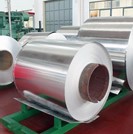With more and more consumers setting their sights on ‘Drive Electric,’ manufacturers must prepare themselves for alternative solutions to combustion engines. This change will no doubt require an alternative automation strategy for our electric futures.

The battery
The driving force behind these new electric vehicles is, of course, the battery. With this new wave of electric vehicles, the lithium ion battery manufacturing sector is growing exponentially, creating a significant need for traceability and tracking throughout the manufacturing processes.
Battery manufacturing is classified into three major production areas:
-
- Electrode manufacturing
- Cell assembly
- Finishing formation, aging and testing
These processes require flexible and efficient automation solutions to produce high quality batteries effectively. As such, there are numerous areas that can benefit from RFID and/or code reading solutions. One of the biggest of these is the electrode manufacturing process, specifically on the individual mother and daughter electrode rolls. This is a great application for UHF (Ultra-High Frequency) RFID.
The Need for RFID
The electrode formation process involves numerous production steps, including mixing, coating, calendaring, drying, slitting and vacuum drying. Each machine process generally begins with unwinding turrets and ends with winding ones. A roll-to-roll process.
Two of the three primary components of the lithium ion battery, both the anode and cathode electrode, are produced on rolls and require identification, process step validation and full traceability all the way through the plant.
During the slitting process both larger mother rolls are unwound and sliced into multiple, smaller daughter rolls. These mother and daughter rolls must also be tracked and traced through the remaining processes, into storage and ultimately, into a battery cell.
Solution
Working with our battery customers and understanding their process needs, a UHF RFID tag was developed specifically to withstand the electrode production environment. Having a tag that can withstand a high temperature range is crucial, particularly in the vacuum drying lines. This tag is capable of surviving cycling applications with temperatures up to 235 °C. Its small form factor is ideal for recess mounting in the anode and cathode roll cores with an operating range reaching 4 meters.
The tag embedded in the roll core paired with an RFID processor and UHF antenna provides all the necessary hardware in supporting battery plants to achieve their desired objective of tracking all production steps. Customers not only have the option of obtaining read/writes, via fixed antennas at the turrets, but also handheld ones for all storage locations — from goods receiving to daughter coil storage racks within a plant.
This UHF RFID system allows for tracking from the initial electrode coils from goods received in the warehouse, through the multiple machines in the electrode manufacturing process, into the storage areas, and to the battery cell assembly going in the electric vehicle — ultimately linking all battery cells back to a particular daughter roll, and back to its initial mother roll. RFID is on a Roll!



